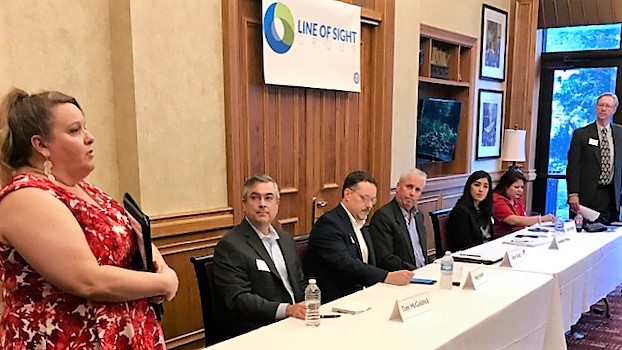Strategic and Competitive Intelligence Tips and Techniques
Last week, Line of Sight Group partnered with the Strategic & Competitive Intelligence Professionals (SCIP) Association to deliver a panel discussion to explore how various organizational roles define and use intelligence to formulate strategy and execute go-to-market initiatives. The panel consisted of practitioners from several industries and across several roles. There were panelists and attendees not only from SCIP but from other associations representing the roles we sought including Product Development and Management Association (PDMA), Customer Experience Professional Association (CXPA) and the Special Libraries Association (SLA).
The fast-paced discussion first explored what types of intelligence were needed. With so much data available from so many sources, there is a heightened importance for analyzing, synthesizing and making sense of it. Several ideas emerged from making it simple, visual, or put into the context of the consumer of the intelligence. One of the firms had operationalized this into Red, Yellow, and Green dashboards. Some added that storytellers could be employed to convey the messages and clues found in the intelligence. There was attention given to the ways that technology was impacting the field – several firms are using or are built on analytics. Others are starting to look at Artificial Intelligence (AI) and Virtual Reality (VR).
There were some interesting examples, as well. One firm conducted Scenario Planning and accurately predicted the acquisition of Whole Foods by Amazon. Another example was that Red Roof Inns capitalized on the fact that 2% of all airline flights are cancelled and figured out a way to cater to temporarily stranded travelers yielding a very favorable business outcome.
Another aspect that emerged was the importance of building trust and collaborating amongst the various roles in research, product management, marketing, sales, customer experience and strategy formulation. With the advent of technology like cloud, mobile, big data and the aforementioned analytics, AI and VR, the notion of sustainable competitive advantage is challenged. This points towards an ongoing monitoring of the external environment to either avoid disruption or to get ahead of the curve and do some disruption.
The panel ended by sharing a list of helpful books:
- The Amazon Way: 14 Leadership Principles Behind the World’s Most Disruptive Company by John Rossman
- Do I Make Myself Clear? by Harold Evans
- Principles: Life and Work by Ray Dalio
- Originals: How Non-conformists Change the World by Adam Grant
- Starting a Competitive Intelligence Function by SCIP
- The Strategist by Cynthia A. Montgomery
- Good Leaders Ask Great Questions by John C. Maxwell
- Assorted Competitive Intelligence Books by Michael Porter and Liam Fahey







